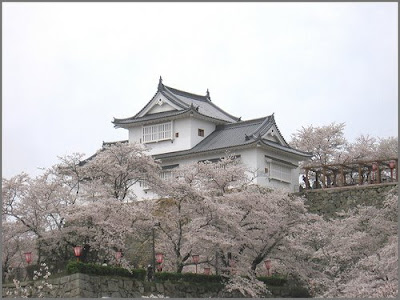| この道や行く人なしに秋の暮れ  this road where no one travelles - autumn dusk Matsuo Basho |
道 MICHI . Painting by Higashiyama Kaii
Tr. Gabi Greve
:::::::::::::::::::::::::::::::::::::::::::::::::::::::::::::::::::::::::::::::::::::::::::::::::::::
For Higashiyama, painting was like a prayer. He felt the divine presence in nature and tried to capture it on canvas, just as a Buddhist sculptor feels the divine in a piece of wood and helps it to come alive in a statue.
Because of the exhibition we see a lot of features about Higashiyama these days.
My details are HERE:
. . . Higashiyama Kaii 東山魁夷
:::::::::::::::::::::::::::::::::::::::::::::::::::::::::::::::::::::::::::::::::::::::::::::::::::::
"The way in which the elements of nature are singled out
for sensory consumption is remarkably similar to how a good haiku works."
A look at the spirituality of Kaii Higashiyama
C.B. LIDDELL in the Japan Times, May 2008
There are two primary ways in which art can give a sense of spirituality. One is by portraying religious iconography and spiritual concepts. The other is by fostering a meditative, transcendent feeling in the viewer.
As far as I understand it, the latter type of artistic spirituality, in Western culture, began with the 18th Century European philosophic concept of the Sublime, which in turn influenced the 19th Century American concept of Transcendentalism.
For a discussion of this:
http://www.groveart.com/grove-owned/art/spirituality_public.html
I like Higashiyama Kaii's "The Road" quite a bit, not only for its appeal to emotion, but also for its semi-abstract style. That road is a long, narrow rectangle that simultaneously goes into the landscape's distance, and stays on the plane of the painting's surface.
© Compiled by Larry Bole
Haiku Information Board
:::::::::::::::::::::::::::::::::::::::::::::::::::::::::::::::::::::::::::::::::::::::::::::::::::::
Special Thanks for this page go to Larry Bole!
Buddhist Sculptors Gallery
More translations of
kono michi ya yuku hito nashi ni aki no kure
... kono michi ya ... this road ...
:::::::::::::::::::::::::::::::::::::::::::::::::::::::::::::::::::::::::::::::::::::::::::::::::::::
一本の道を微笑の金魚売
ippon no michi o mishoo no kingyo uri
a goldfish seller
with a smile
on this straight road
Hirahata Seito (Hirahata Seitoo) 平畑静塔
Reference
:::::::::::::::::::::::::::::::::::::::::::::::::::::::::::::::::::::::::::::::::::::::::::::::::::::
spring mud -
the bumpy road ahead
for Japan
Gabi Greve, March 11, 2011
. Japan - after the BIG earthquake .
:::::::::::::::::::::::::::::::::::::::::::::::::::::::::::::::::::::::::::::::::::::::::::::::::::::
The word road (michi), just like that, is a topic for haiku.
The same holds for
bumpy road
muddy road
etc.
:::::::::::::::::::::::::::::::::::::::::::::::::::::::::::::::::::::::::::::::::::::::::::::::::::::
on bends in the road,
the sound of rolling potatoes
from the trunk
- Shared by Tomislav Maretic -
Joys of Japan, 2012
:::::::::::::::::::::::::::::::::::::::::::::::::::::::::::::::::::::::::::::::::::::::::::::::::::::
observance kigo for early autumn
bon michi 盆路 (ぼんみち) road for O-Bon
bonmichi zukuri 盆路作り(ぼんみちづくり)making a Bon-road
tsuitachi michi 朔日路(ついたちみち)road on the first day
shooryoomichi 精霊路(しょうりょうみち)road for the souls
michikari 路刈り(みちかり)cutting grass along the road
michinagi 路薙ぎ(みちなぎ) cleaning the road
In preparation for the arrival of the souls of the ancestors.
It used to be the first day of the seventh lunar month, now in August 1.
The roads along the graveyard are cleaned.
. Bon Festival, O-Bon, Obon お盆 .
:::::::::::::::::::::::::::::::::::::::::::::::::::::::::::::::::::::::::::::::::::::::::::::::::::::
. . . Read my Haiku Archives 2008
:::::::::::::::::::::::::::::::::::::::::::::::::::::::::::::::::::::::::::::::::::::::::::::::::::::
[ . BACK to DARUMA MUSEUM TOP . ]
[ . BACK to WORLDKIGO . TOP . ]
:::::::::::::::::::::::::::::::::::::::::::::::::::::::::::::::::::::::::::::::::::::::::::::::::::












